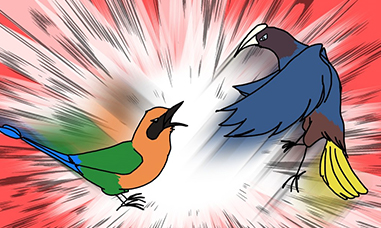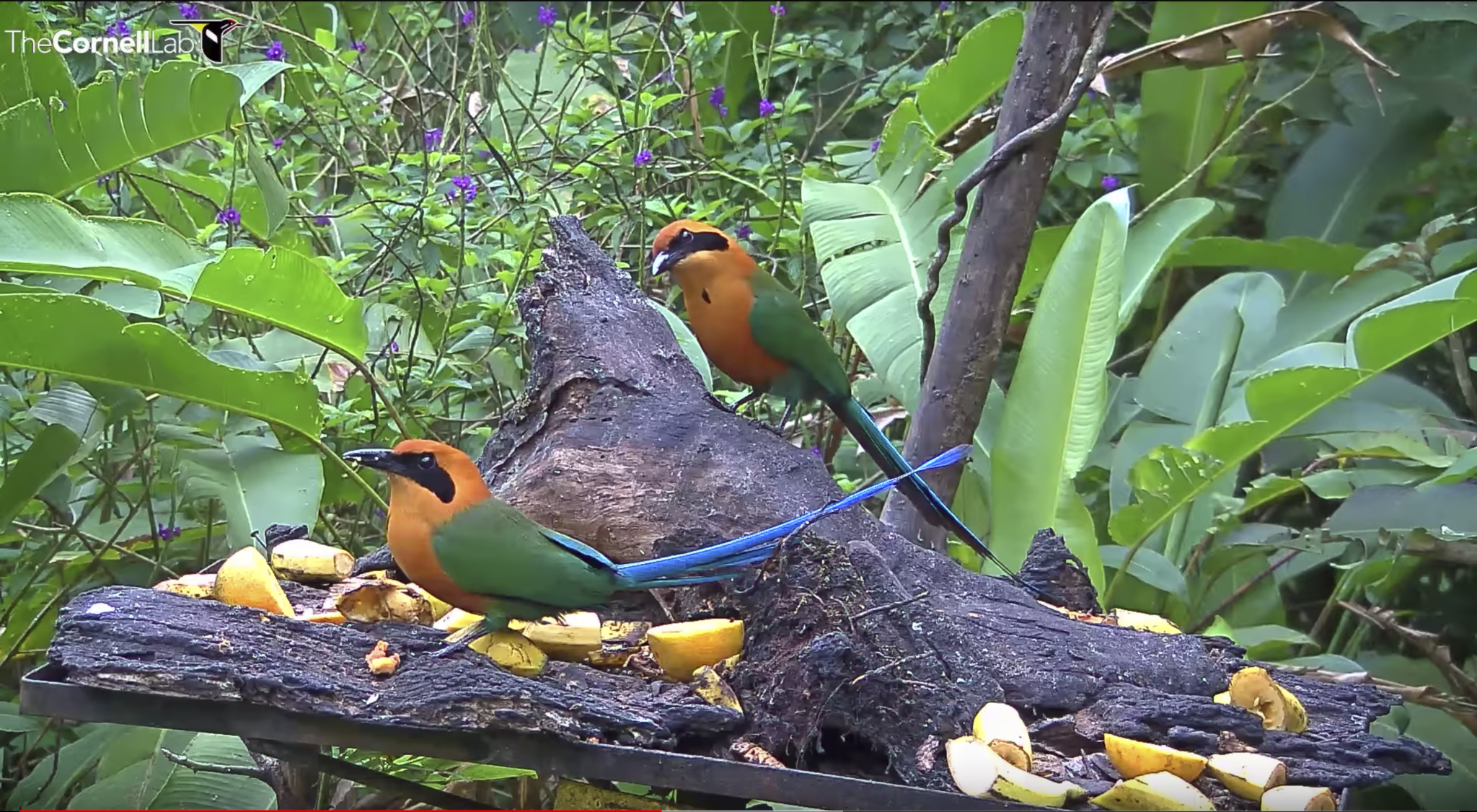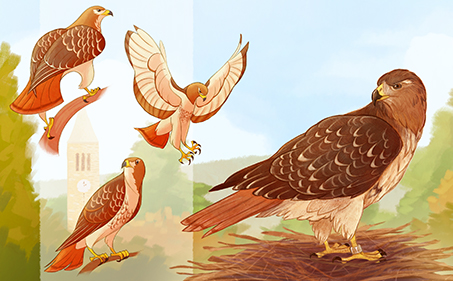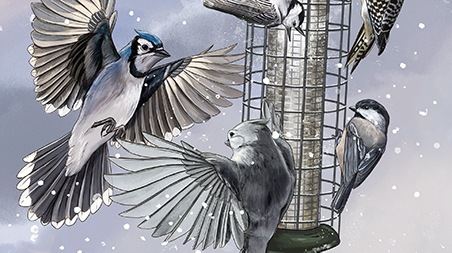Past Investigations
Cornel Feeders Live: February – July 2021
Cornell Feeders Live was an investigation in which we studied the birds visiting the feeding station seen on the Cornell FeederWatch cam. We sought to answer two questions: (1) What is the daily visitation pattern of different species at the feeders? (2) How does weather affect the probability of different species visiting the feeders? We tagged data in real time for eight birds species from March 31 – April 14, 2021, and found that species differed in their visitation patterns by date and time of day, but not temperature. You can read about what the community did and found out in the investigation’s Final Report.
Battling Birds Panama Edition: December 2020 – June 2021
Similar to Battling Birds, we set out to study the social behavior of birds at a feeder, but this time in Panama. Panama Fruit Feeder cam viewers expressed interest in wanting to learn more about aggression, a behavior that Dr. Miller studied in North American feeder birds. With the community’s interest and Dr. Miller’s expertise, we pieced together the puzzle and created a pecking order or social dominance hierarchy. We found out, when birds come to a feeder, the heavier the bird, the more likely it is to successfully displace its opponent. You can read about what the community did and found out in the investigation’s Final Report.
Hawk Happenings: April – November 2020
Hawk Happenings was the second co-created investigation centered on the Red-tailed Hawk cam in which the community and staff scientists sought to answer two research questions: (1) What is the frequency of certain hawk behaviors, and (2) does this frequency vary with the weather? From May–June 2020, the community collected data in real time on behaviors commonly seen at the nest: vocalizations, feedings, prey deliveries, and three nestling activities (flapping, walking, and prey guarding). Then, after the bird cam staff turned the data into interactive visualizations, the community came together to explore the data online and in a live webinar. Then, with a group of volunteer reviewers, the staff scientists put together a final report summarizing the investigation and novel findings.
Panama Live: November 2019 – November 2020
In November 2018, scientists and cam viewers came together to watch the Panama Fruit Feeder cam, share their observations, and discuss potential questions they could pursue to learn more about the tropical species they were seeing on cam. After weeks of discussion, refinement, and a vote, they decided to answer three questions: (1) When do focal species arrive at the feeder? (2) How does this vary from day to day? (3) Does the timing of food affect when birds arrive? In February 2020, they pursued these questions by collecting data in real time from the cam for six species that are common at the feeder: Clay-colored Thrush, Crimson-backed Tanager, Gray-cowled Wood-Rail, Gray-headed Chachalaca, Rufous Motmot, and Thick-billed Euphonia. Then, the community joined scientists to visually explore results (online and in a live webinar) before reviewing and providing feedback on a final report written up by the scientists.
Hawk Talk: May 2018 – March 2020
During the Summer of 2018, volunteer cam viewers spent weeks observing the Red-tailed Hawk cam, brainstorming questions about what they were seeing, discussing with each other and scientists, and ultimately voting on a question to investigate: Do hawks use different kinds of calls in different situations at the nest? Even though Red-tailed Hawks are one of the most widespread North American birds, scientists still have much to discover about their behavior and vocalizations. From January to August 2019, we collaborated with the Zooniverse community to record vocalizations and behaviors in 10-second clips from the first week of the 2018 Red-tailed Hawk season. Then, we explored the results using interactive visualizations and wrote up what we found in a final summary.
Battling Birds: October 2018 – December 2019
In two rounds of data collection, volunteers on Zooniverse watched clips taken from the Cornell Lab of Ornithology’s FeederWatch Cam. They recorded information birds, interactions, and weather to answer the question, How does the number of species and individuals affect behavioral interactions at the feeder? While behavioral interactions at bird feeders have been previously studied, not much is known about the influence of the numbers of species or individuals on these interactions. After over 3,000 participants collected more than 173,500 classifications from more than 25,000 video clips, we explored what the data could reveal using interactive visualizations and wrote up the findings in a final summary.





